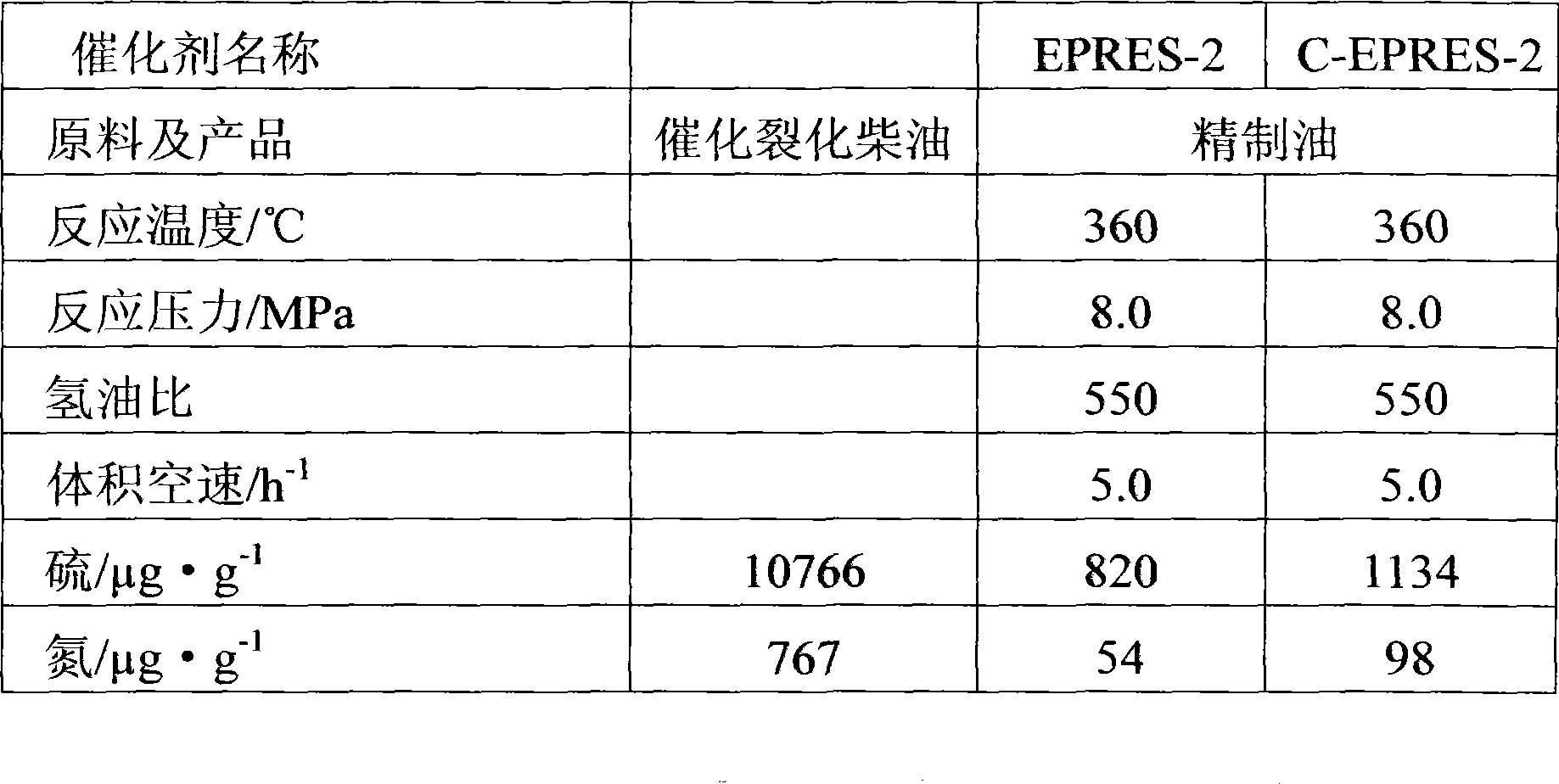Processing method before using hydrogenation catalyst
A technology of hydrogenation catalyst and treatment method, which is applied in chemical instruments and methods, catalyst activation/preparation, physical/chemical process catalyst, etc., can solve the problem of self-heating of sulfided catalysts, and reduce the self-heating of catalysts. Achieve the effect of improving vulcanization effect, reducing sulfur loss and reducing side reactions
- Summary
- Abstract
- Description
- Claims
- Application Information
AI Technical Summary
Problems solved by technology
Method used
Image
Examples
Embodiment 1
[0025] The commercial hydrodesulfurization catalyst FH-5A (developed by Fushun Petrochemical Research Institute and produced by Wenzhou Huahua Group Co., Ltd.) was selected. The main composition and properties are shown in Table 1.
[0026] The specific pre-sulfurization process is as follows:
[0027] 1. The elemental sulfur powder is mixed with the oxidized catalyst, and the amount of elemental sulfur introduced is 105% of the theoretical sulfur demand of the catalyst. Then mix and impregnate with the mixed emulsion of coked diesel oil fraction and water, the amount of coked diesel oil fraction is 45% of the weight of the catalyst, and the amount of water is 25% of the weight of the catalyst.
[0028] 2. The catalyst obtained in step 1 was treated at normal pressure and 150° C. for 5 hours to obtain the hydrorefining catalyst EPRES-1 finally containing a sulfurizing agent.
Embodiment 2
[0030] The catalyst in the oxidation state is the same as in Example 1, which is FH-5A.
[0031] The specific pre-sulfurization process is as follows:
[0032] 1. Uniformly impregnate triethylamine on the oxidized FH-5A catalyst, and the addition amount of triethylamine is 5% of the catalyst weight to obtain a catalyst loaded with triethylamine.
[0033] 2. Mix elemental sulfur powder, water, and organic solvent (the organic solvent is a mixture of catalytically cracked gasoline and rapeseed oil with a volume ratio of 8:1) to form an emulsion. The amount of organic solvent is 15% of the weight of the catalyst, and the amount of water is 1% of the catalyst weight. 10% by weight, and the amount of elemental sulfur is 105% of the theoretical sulfur requirement of the catalyst containing metal, and the above emulsion is mixed with the catalyst loaded with triethylamine obtained in step 1.
[0034] 3. The catalyst obtained in step 2 was treated at 0.3 MPa and 160° C. for 8 hours t...
Embodiment 3
[0038] The catalyst in the oxidation state is the same as in Example 1, which is FH-5A.
[0039] The specific pre-sulfurization process is as follows:
[0040] 1. Dissolve triethylamine and gluconic acid in ammonia water containing 8wt% ammonia in a weight ratio of 4:1, impregnate the catalyst in the oxidation state with the solution, the amount of the above substances is 15% of the weight of the catalyst, and then dry at 130°C for 4 hours, a catalyst containing mixed organic additives was obtained.
[0041] 2. The mixed solvent of vacuum distillate oil and peanut oil with a volume ratio of 1:2 is mixed with water to form an emulsion. The amount of solvent used is 0.5% of the weight of the catalyst, and the amount of water used is 0.2% of the weight of the catalyst. The emulsion is first introduced into the catalyst in an oxidized state. Then it is mixed with elemental sulfur solid powder, and the amount of elemental sulfur is 90% of the theoretical required sulfur amount of ...
PUM
 Login to View More
Login to View More Abstract
Description
Claims
Application Information
 Login to View More
Login to View More - R&D
- Intellectual Property
- Life Sciences
- Materials
- Tech Scout
- Unparalleled Data Quality
- Higher Quality Content
- 60% Fewer Hallucinations
Browse by: Latest US Patents, China's latest patents, Technical Efficacy Thesaurus, Application Domain, Technology Topic, Popular Technical Reports.
© 2025 PatSnap. All rights reserved.Legal|Privacy policy|Modern Slavery Act Transparency Statement|Sitemap|About US| Contact US: help@patsnap.com

